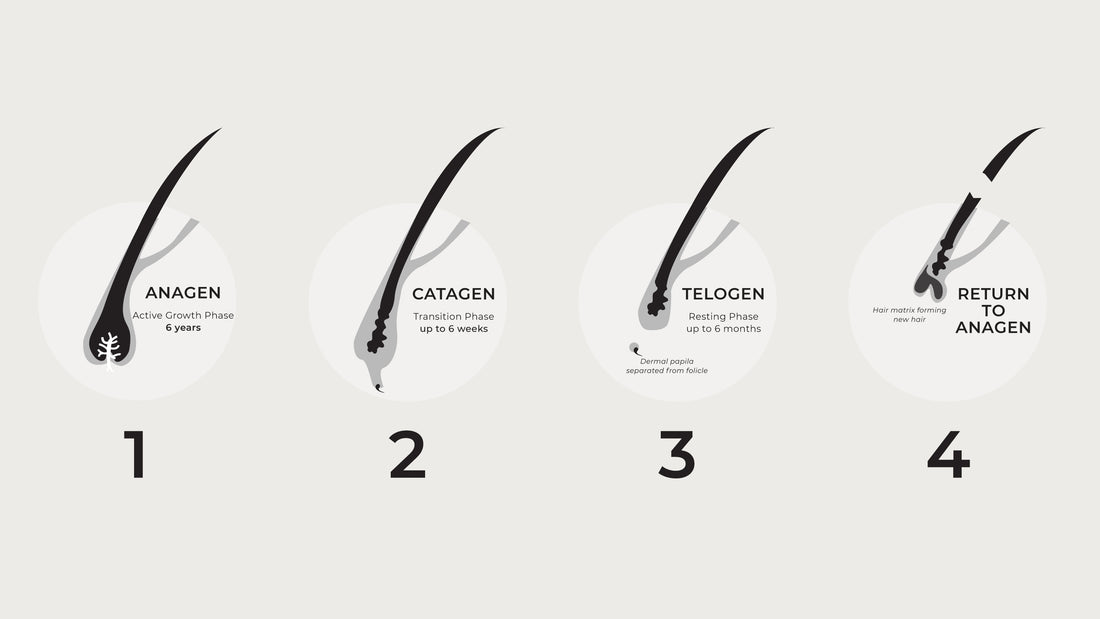
THE HAIR GROWTH CYCLE
Share
BEFORE WE BEGIN...
The information provided in this article is for information purposes only and should not be considered as a substitute for medical advice. Please read our disclaimer at the bottom of this page for more information.
Medically Reviewed by Professor V. Jolliffe
INTRODUCTION
Growing hair is a fascinating and extremely complex process which is centered around the Hair Cycle.
The hair cycle describes the distinct stages which the hair goes through in its journey from the beginning of its growth to when it drops out and sheds at the end of its cycle. Everyone’s hair has a cycle, but the length of the cycle can vary from individual to individual and can be disrupted by a number of factors including age and ill health, to name just a couple of causes.
Understanding the hair cycle gives us a greater insight into why hair loss occurs and, with over 100,000 hairs on your head, it's a good thing that each hair is at its own stage in the cycle! In fact it is in some ways surprising that it is normal to shed as many as 100 hairs per day.
Let's have a look at the stages of the cycle in a little more detail.
THE HAIR CYCLE

There are three main stages to the hair cycle before it begins again - Anagen, Catagen and Telogen. You may also read about a fourth phase - Exogen - which is an extension of the Telogen phase so we will cover this within the Telogen section.
- ANAGEN - THE GROWTH PHASE

The first phase in the hair cycle is the Anagen phase, which is effectively the active growth phase. It is also the longest of the phases the hair goes through, lasting on average between 2-6 years, with approx. 90% of hairs in this growth phase at any one time.
During Anagen hair grows approximately 1/2 an inch every month, so typically one would expect between 12-36 inches of hair growth during this phase of the cycle. There are some interesting differences in the anagen phase with ethnicity- a longer phase in individuals of Asian descent compared to Caucasian and Afro-Caribbean hair.
Some people have difficulty growing their hair beyond a certain length because they have a short active phase of growth. On the other hand, people with very long hair have a long active phase of growth. The hair on the arms, legs, eyelashes, and eyebrows has a very short active growth phase of about 30 to 45 days, explaining why they are so much shorter than scalp hair. Many causes of hair loss affect the anagen phases- often by shortening it- hence each hair gets finer and shorter if the anagen phase is itself reduced.
- CATAGEN - THE TRANSITIONAL PHASE

As the hair completes the Anagen phase of the hair cycle, it enters a transitional period between growth and shedding known as the Catagen Phase. This is the shortest of the three primary phases and it signals the end of active hair growth.
Over the next 2-3 weeks of the Catagen phase, the hair follicle begins to shrink as the growth phase stops and the hair fiber prepares to separate itself from the hair follicle. At this point the hair will cease to have live cells present and may also be known as club hair, due to the ‘club’ shaped appearance of the root as it prepares to be shed from the scalp.
- TELOGEN - THE RESTING PHASE

The final stage in the hair cycle is the Telogen phase, or the resting phase for the hair before the new hair is formed and the old one is replaced.
During this phase, the club hair we mentioned earlier which has now detached from the blood supply, sits on top of the new hair that is forming underneath giving it room to grow over the next 3 months. It is believed that between 5-8% of all hairs are within this stage of the hair cycle at any one time and Exogen, the shedding phase, begins when the hair cycle starts again.
With 50-100 of these Telogen hairs shed every day, this is considered as normal hair loss such as is seen in the shower or when combing the hair.
There are many factors that can ultimately affect the hair growth cycle, many of which we cover in our article on Understanding Hair Loss. Many hair loss treatments work by prolonging the anagen phase to keep the hair in active growth for as long as possible.
FURTHER READING
Why not check out our other articles;
DISCLAIMER
While our aim is to provide you with up-to-date and relevant information, this information is not a substitute for medical advice. Always discuss your specific case with a healthcare professional who knows your specific medical history.




